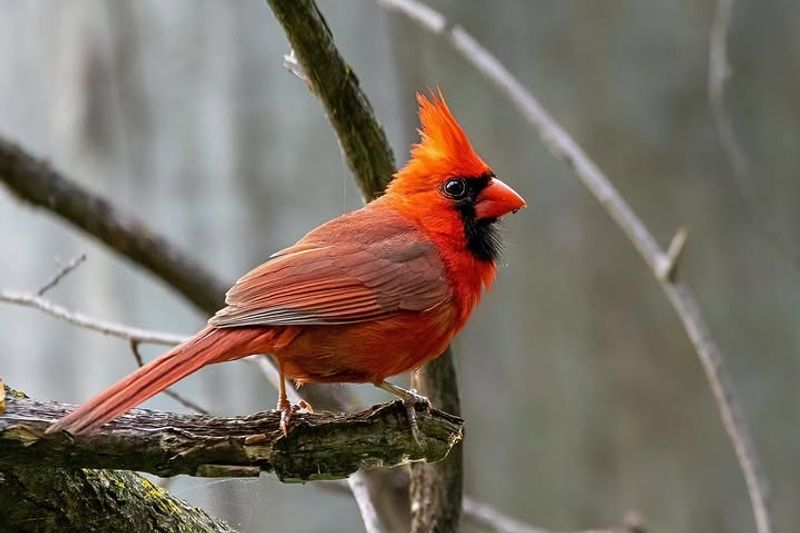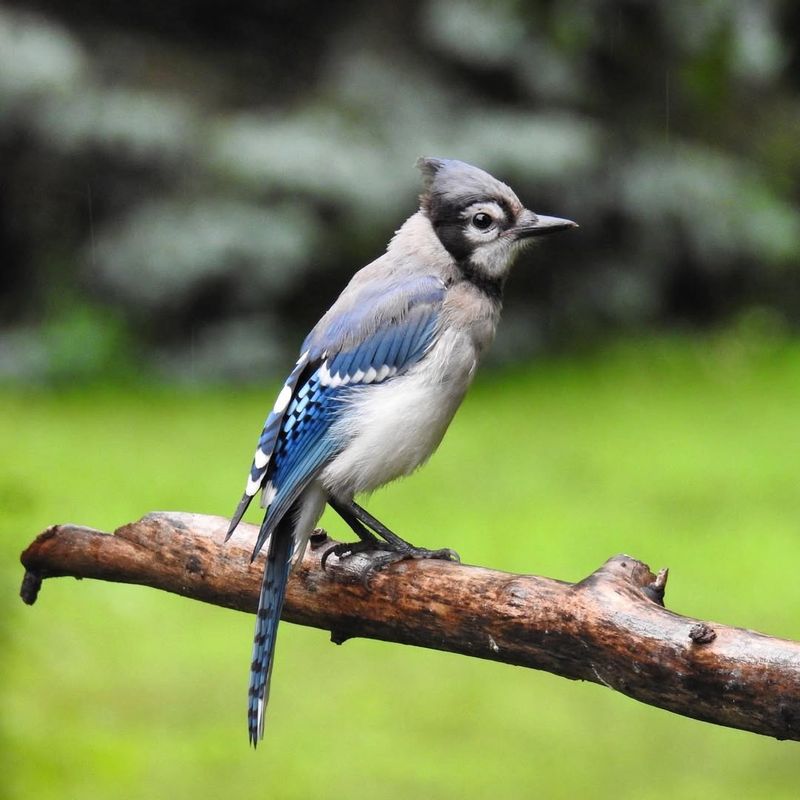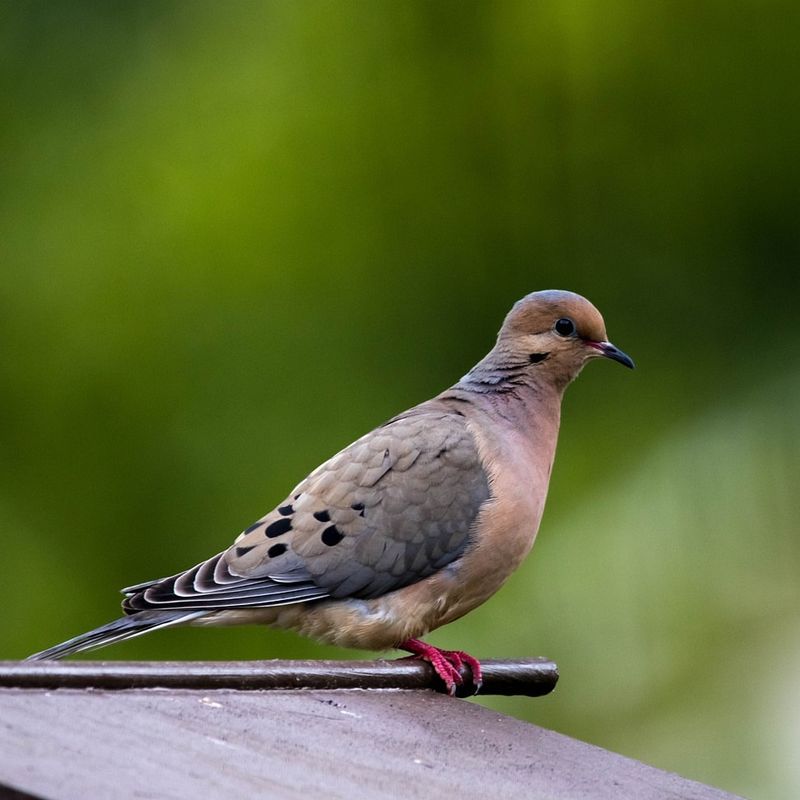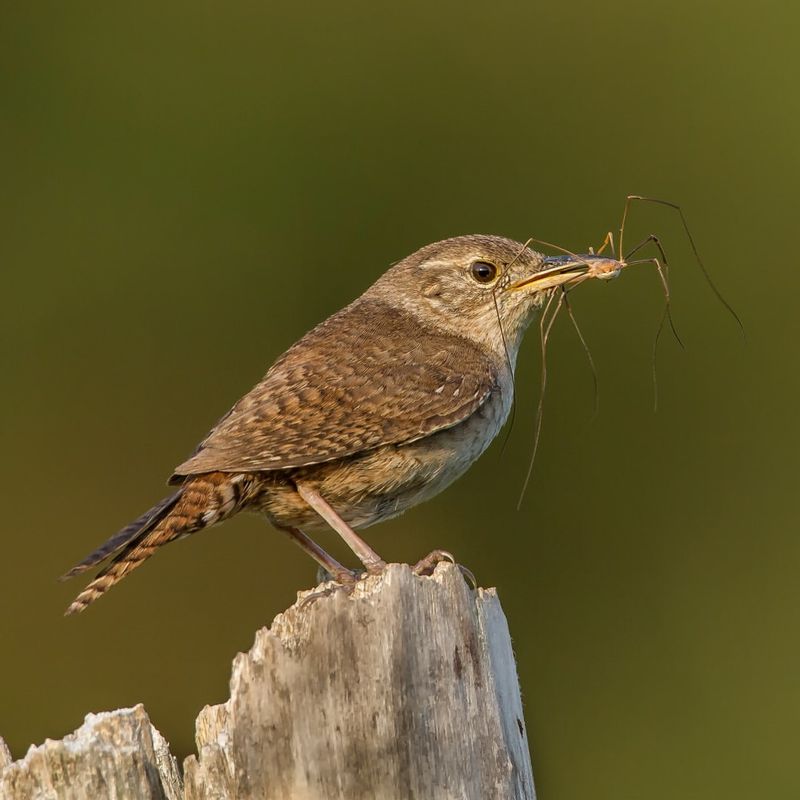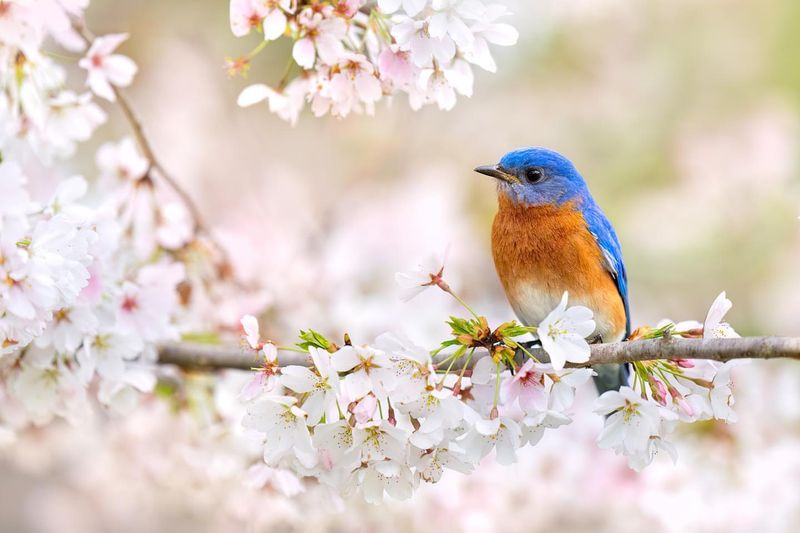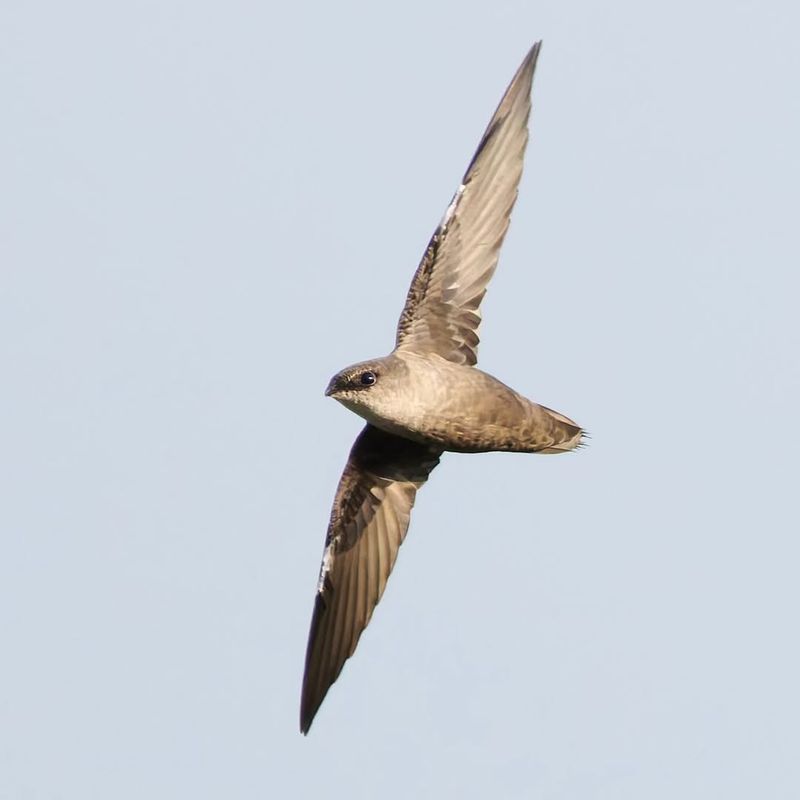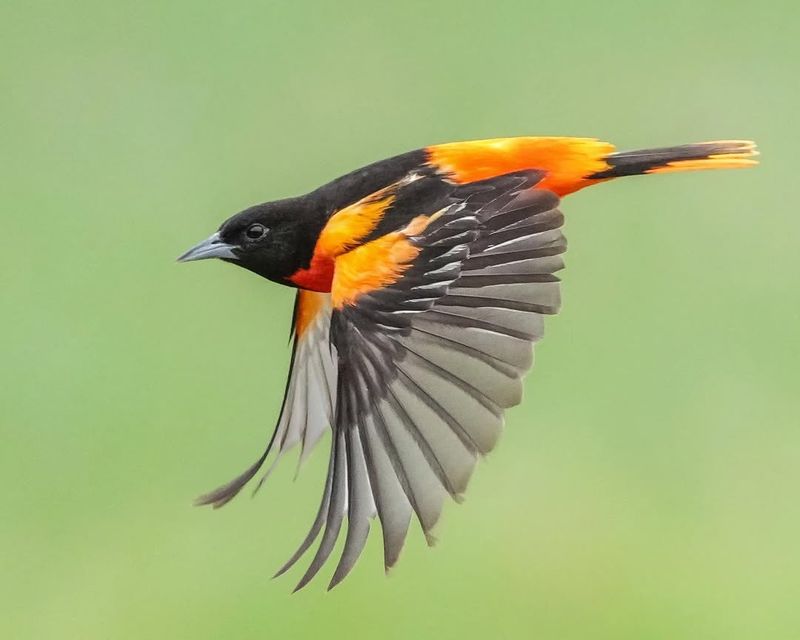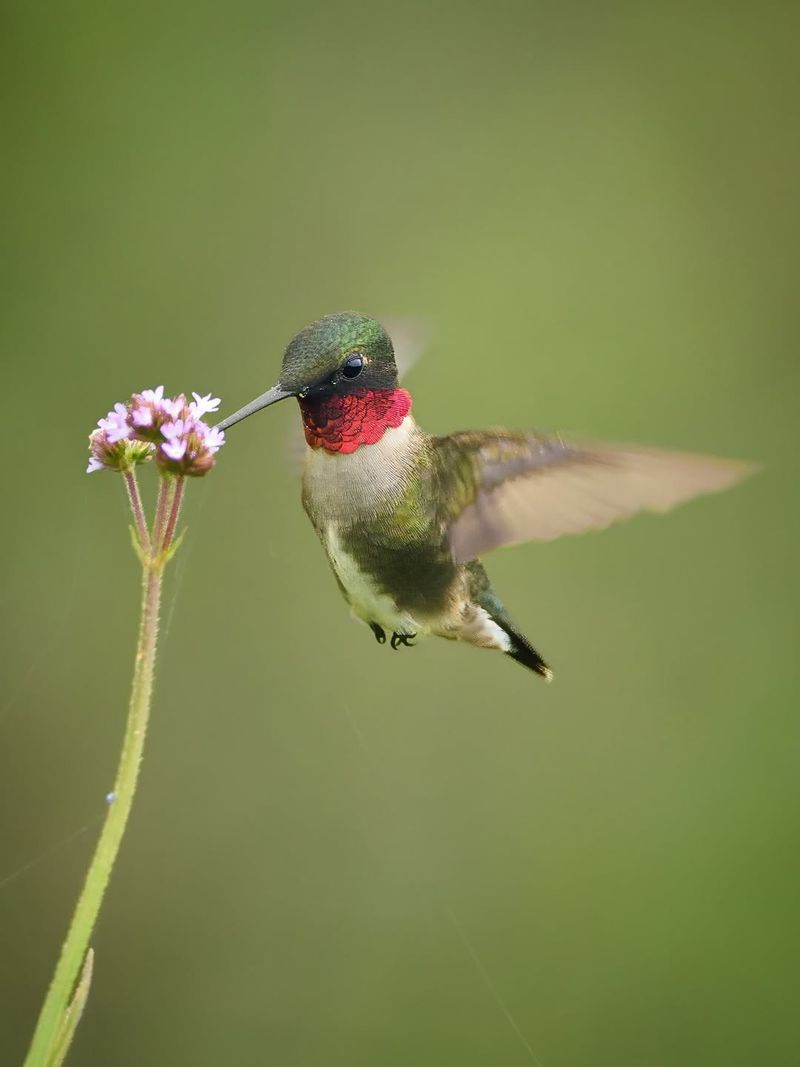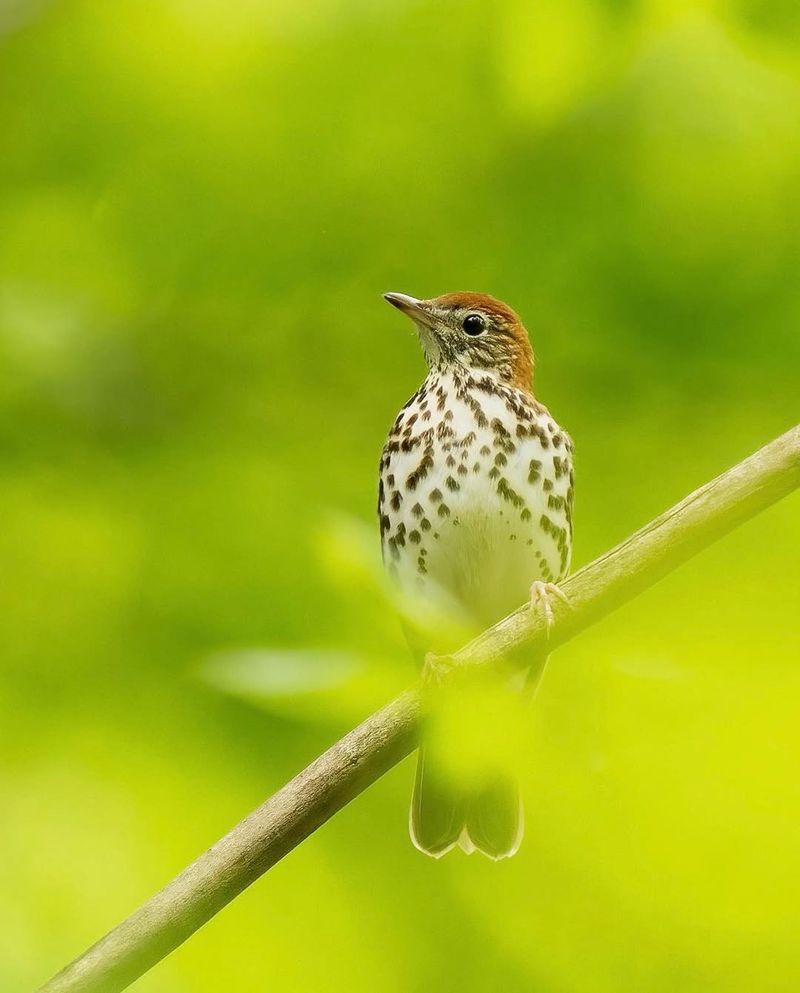Ohio yards are full of feathered visitors, but not every bird you spot can be shooed, moved, or “helped along” to a new home. Many of the species that nest, sing, and snack in your backyard are protected by federal law, meaning relocating them could land you in hotter water than you expect.
These birds may seem common, but their nests, eggs, and young are strictly off-limits. Knowing which ones you must leave right where they are keeps you on the right side of the law, and keeps these native birds safe while they raise the next generation.
1. American Robin
That cheerful bird with the bright orange chest hopping across your lawn enjoys full protection under the Migratory Bird Treaty Act. American Robins build their mud-and-grass nests in trees, shrubs, and sometimes on porch ledges throughout Ohio.
Moving their nests, even if they seem inconveniently placed, violates federal law. Parents return to the same nesting spots year after year, showing remarkable site loyalty.
If robins choose your property, consider it a compliment to your yard’s health and safety!
2. Northern Cardinal
Ohio’s state bird wears its crimson feathers like a badge of honor, and the law shields every cardinal from relocation. Males sport brilliant red plumage while females display subtle brown tones with reddish highlights.
Cardinals prefer dense shrubs and thickets for nesting, often choosing spots close to human homes. Their loud, clear whistles echo through neighborhoods during breeding season.
Disturbing their nests brings federal penalties, so admire these beauties from a respectful distance instead.
3. Blue Jay
Bold and intelligent, Blue Jays command attention with their striking blue, white, and black feathers. These clever birds build sturdy stick nests high in oak trees and defend their territory with loud, harsh calls.
Despite their sometimes aggressive behavior toward other birds, Blue Jays remain federally protected. Their acorn-caching habits actually help plant new oak forests across Ohio.
Touching their nests or attempting relocation could result in serious fines from wildlife authorities.
4. Mourning Dove
Named for their haunting, melancholy cooing sounds, Mourning Doves construct surprisingly flimsy platform nests from twigs. You might spot these gentle birds building in trees, on ledges, or even in hanging planters.
Their nests look barely sturdy enough to hold eggs, yet they successfully raise multiple broods each year. Federal protection covers these peaceful visitors throughout all nesting stages.
Watch them waddle around your yard eating seeds, but never interfere with their family life.
5. House Wren
Tiny but mighty, House Wrens pack enormous energy into their small brown bodies. These feisty birds claim any available cavity for nesting, from birdhouses to old boots left outside.
Males often build multiple dummy nests to impress potential mates with their construction skills. Their bubbling, cheerful songs fill Ohio yards throughout spring and summer months.
Protected by federal law, these territorial little birds will aggressively defend their chosen spots, so respect their space and enjoy the free concert!
6. Eastern Bluebird
With sky-blue backs and warm rusty breasts, Eastern Bluebirds represent one of Ohio’s most beloved backyard visitors. Conservation efforts brought these beauties back from serious population decline decades ago.
They readily use nest boxes mounted on posts in open yards, making them easy to observe. Bluebirds face competition from invasive species but remain strictly protected under federal guidelines.
Installing proper nest boxes helps them thrive, but relocating occupied nests breaks the law no matter how good your intentions seem.
7. Chimney Swift
Looking like flying cigars, Chimney Swifts spend almost their entire lives airborne, catching insects on the wing. They nest inside chimneys, using their sticky saliva to glue twigs against vertical surfaces.
Many homeowners discover these birds only when hearing chirping from their fireplace. Federal law prevents removing active nests, even from functional chimneys.
Wait until fall migration ends their nesting cycle, then cap your chimney if needed before next spring’s return brings them back again.
8. Baltimore Oriole
Flashing brilliant orange and black plumage, male Baltimore Orioles look like flying flames darting through trees. Females weave incredible hanging pouch nests from plant fibers, suspending them from high branches.
These architectural marvels can take up to two weeks to construct properly. Orioles arrive in Ohio during late April, bringing tropical beauty to northern yards.
Their nests might survive winter storms, but touching them during breeding season violates federal protection laws designed to preserve these stunning migrants.
9. Ruby-throated Hummingbird
Weighing less than a nickel, Ruby-throated Hummingbirds perform aerial acrobatics while defending flower patches and feeders. Females build walnut-sized nests from plant down and spider silk, camouflaging them with lichen pieces.
These tiny cups stretch as baby hummingbirds grow inside them. Males flash brilliant red throat patches during courtship displays.
Despite their miniature size, these migrants enjoy full federal protection, making nest disturbance illegal regardless of how delicate or temporary the structure appears.
10. Red-winged Blackbird
Males proclaim their territory with distinctive conk-la-ree calls while flashing scarlet and gold shoulder patches. Red-winged Blackbirds nest in marshes, ditches, and even ornamental grasses near homes.
Females weave intricate basket nests low in vegetation, carefully hidden from predators. These birds become fiercely protective during nesting season, sometimes dive-bombing anyone approaching too closely.
Federal law protects their aggressive parenting behavior, so detour around nesting areas rather than attempting to relocate these determined defenders.
11. Wood Thrush
Famous for their flute-like songs echoing through forests, Wood Thrushes bring musical magic to shaded Ohio yards. These cinnamon-brown birds with heavily spotted breasts prefer building nests in understory shrubs.
Their populations have declined significantly due to habitat loss, making legal protection especially important. Wood Thrushes sing most beautifully at dawn and dusk during breeding months.
If you’re lucky enough to host nesting Wood Thrushes, enjoy their enchanting melodies while leaving their homes completely undisturbed per federal regulations.



